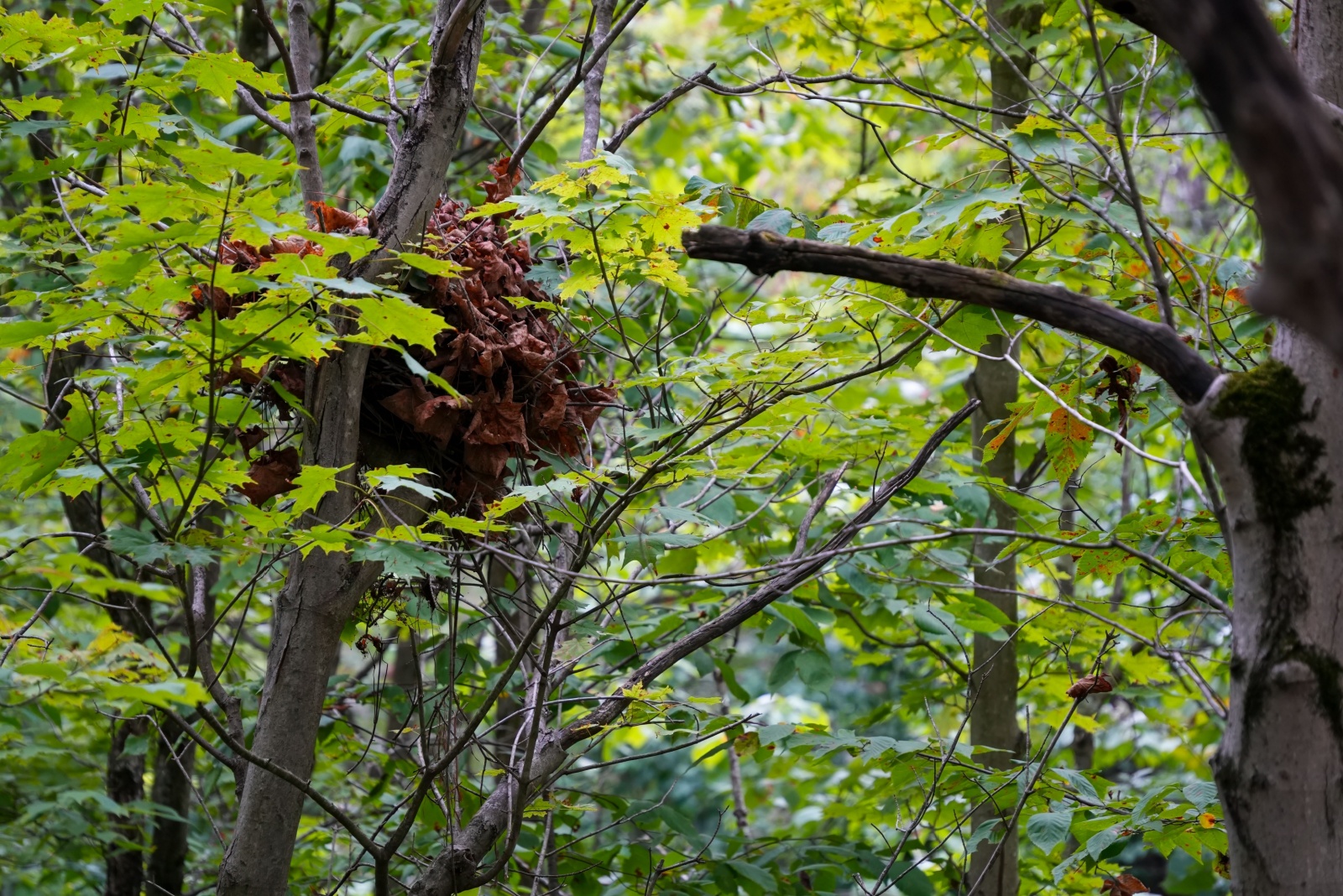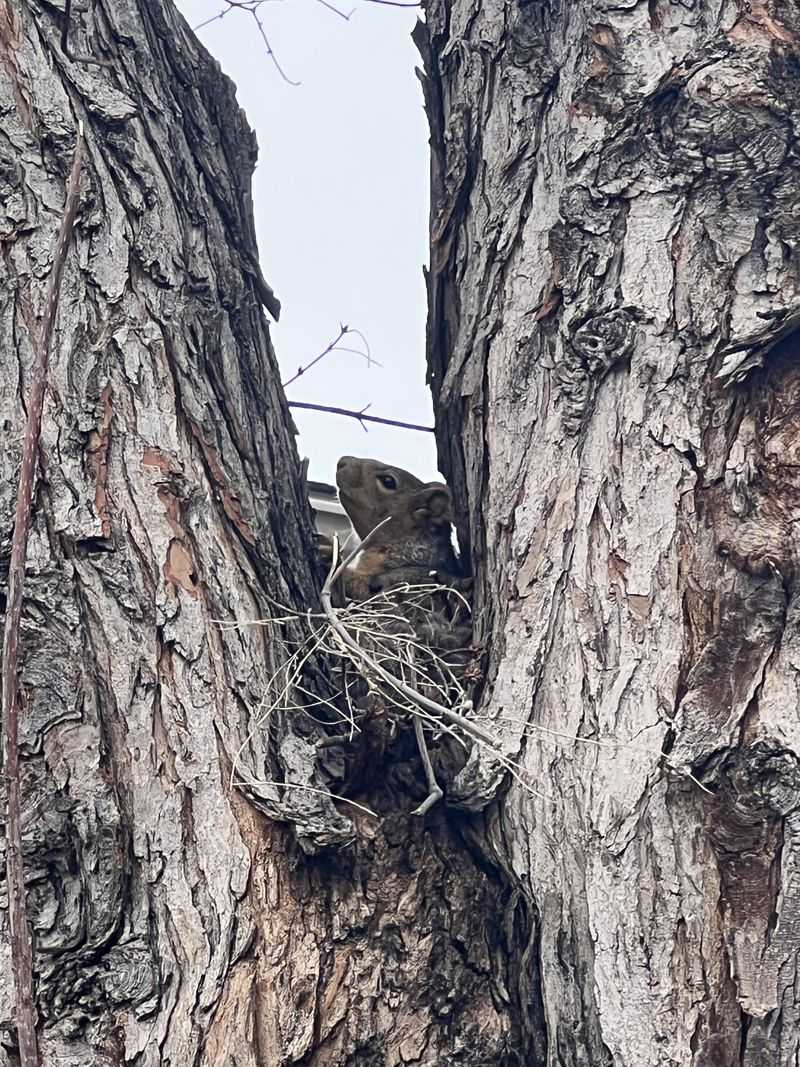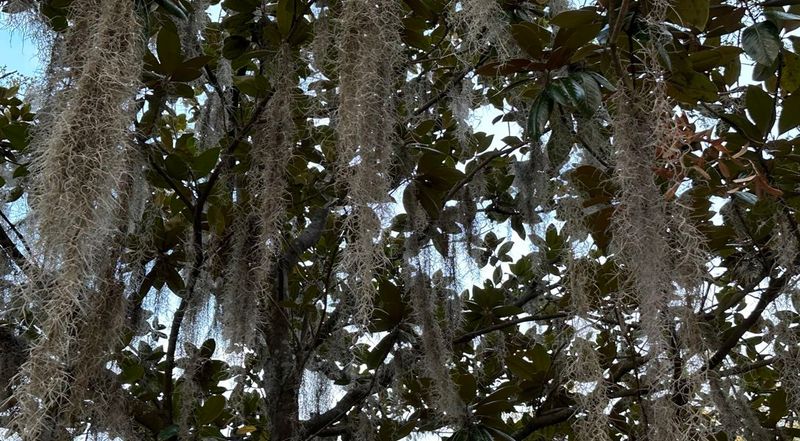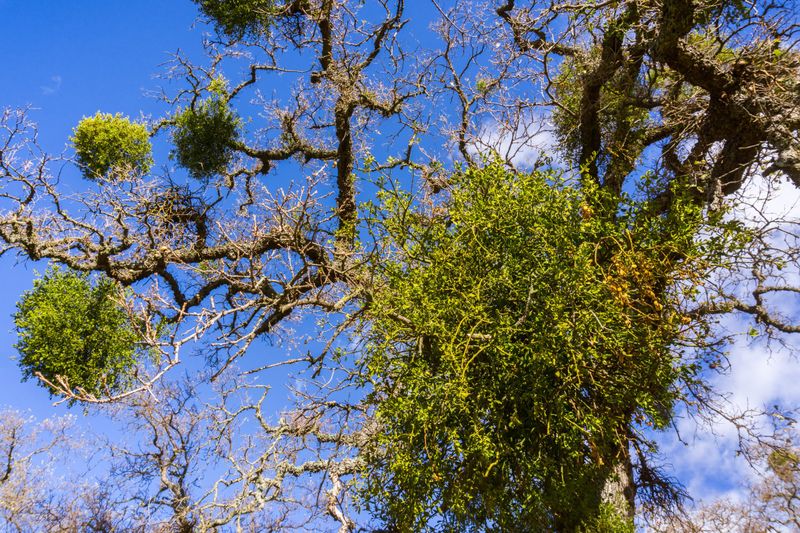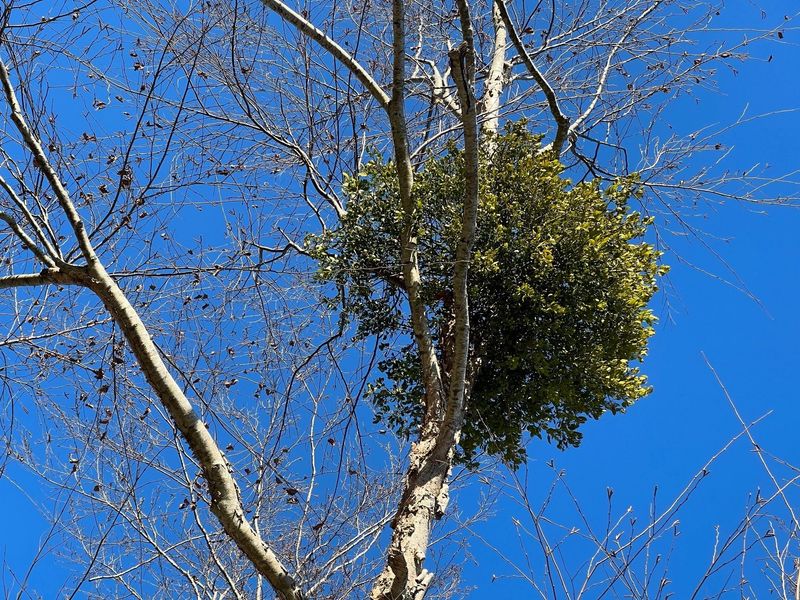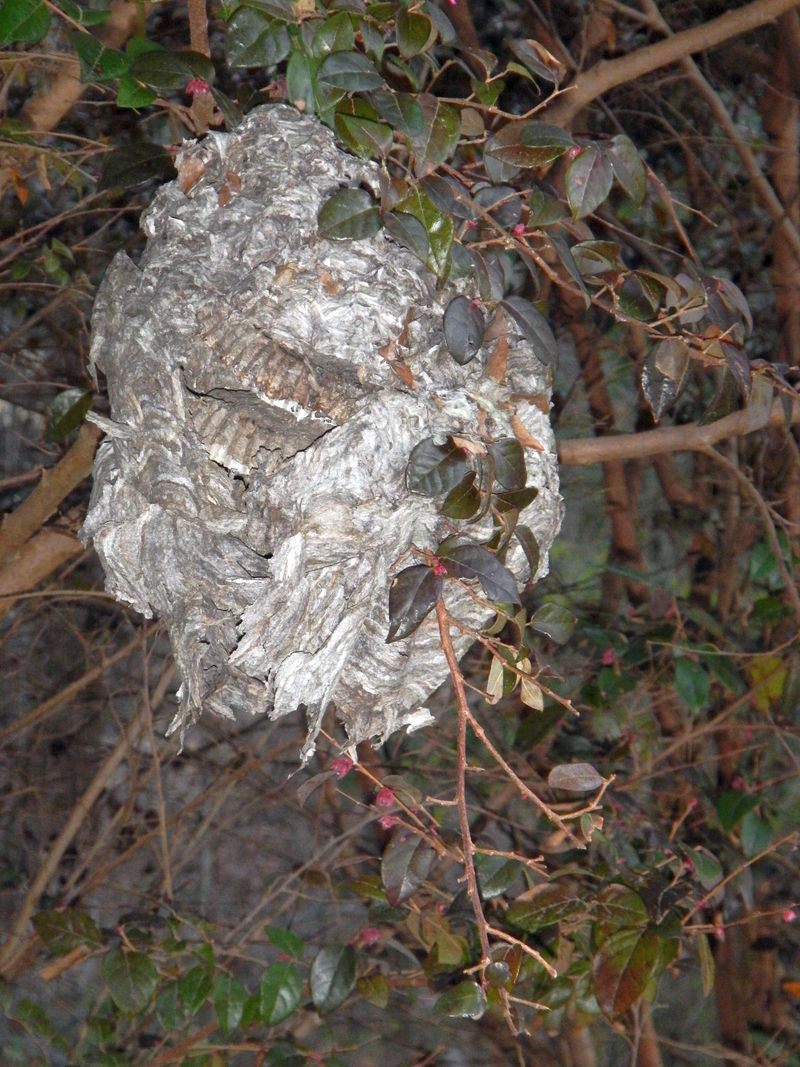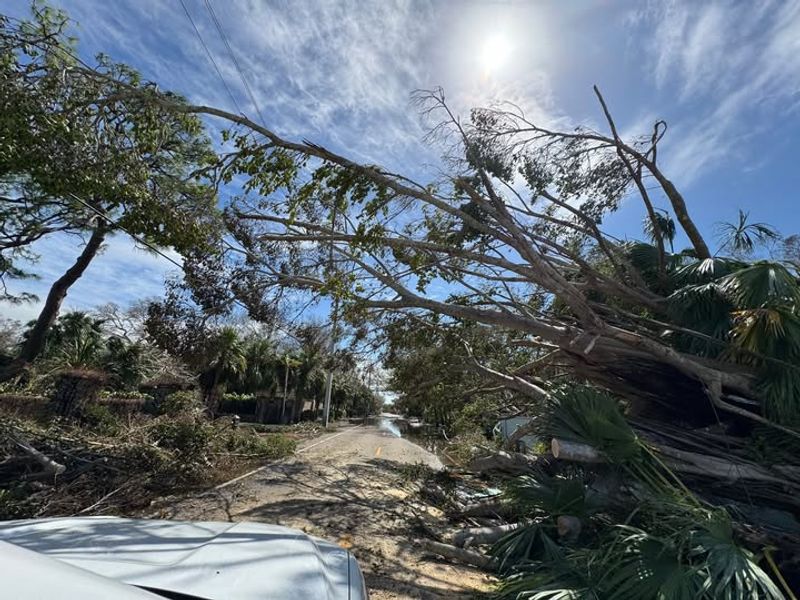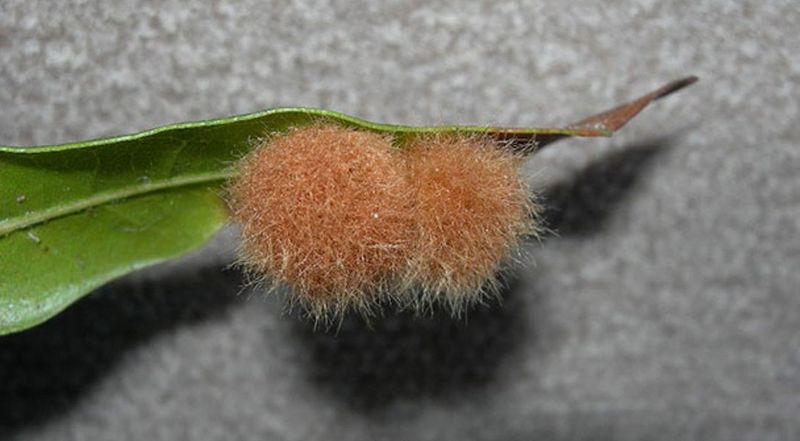Ever spotted a big clump of leaves high up in a Florida tree and wondered if birds built it? Many people mistake these leafy bundles for bird nests, but they’re usually something completely different.
Understanding what’s really up there can help you learn more about the wildlife and plants in your backyard.
1. Squirrels Build Leafy Homes Too
Squirrels create structures called dreys that look remarkably similar to bird nests from a distance. These clever critters weave together leaves, twigs, and moss to form cozy shelters where they sleep and raise their babies.
Unlike bird nests, dreys are usually much larger and bulkier, sometimes reaching the size of a basketball. Squirrels prefer building them in the forks of tree branches where they feel safe from predators.
If you watch carefully during early morning or late afternoon, you might spot a bushy tail disappearing into one of these leafy homes.
2. Epiphytic Plants Love Florida Trees
Ball moss and other air plants naturally grow on tree branches throughout Florida, creating clumps that resemble nests. These epiphytes don’t harm the tree because they get their nutrients from rain, air, and debris rather than stealing from their host.
As they mature, these plants form dense, spherical clusters that can fool anyone looking up from the ground. Spanish moss, resurrection ferns, and various bromeliads all contribute to these mysterious bundles.
They’re actually beneficial to local ecosystems, providing homes for insects, frogs, and even small lizards that call Florida home.
3. Mistletoe Creates Convincing Clusters
Mistletoe grows as a parasite on Florida trees, forming rounded green masses that people often confuse with nests. This plant sends roots into the tree’s branches to steal water and nutrients, which can eventually weaken the host tree over time.
During certain seasons, mistletoe becomes especially noticeable with its thick, bushy appearance and small berries. Birds actually spread mistletoe seeds after eating the berries, causing new clusters to appear in different locations.
While it looks harmless and even festive, too much mistletoe can cause serious damage to your trees if left unchecked.
4. Witches’ Broom Disease Causes Odd Growth
Certain fungi, bacteria, and insects trigger abnormal branch growth called witches’ broom that creates dense, tangled masses resembling nests. When trees get infected, their hormones go haywire, causing branches to grow in every direction at once from a single point.
These growths appear as tight clusters of shoots and leaves that look completely out of place on an otherwise normal tree. Oak trees, citrus trees, and many ornamental species in Florida commonly develop this condition.
Although witches’ broom rarely kills trees, it does create strange-looking formations that puzzle homeowners and nature enthusiasts alike.
5. Abandoned Wasp Nests Resemble Leaves
Paper wasps and other insects build papery nests that collect leaves and debris over time, making them look like leafy bundles. After the colony abandons the nest in late fall or winter, wind and weather add more plant material to the structure.
These old nests become homes for other creatures like spiders, beetles, and even small birds looking for shelter. The paper material blends surprisingly well with dried leaves, creating perfect camouflage high in the branches.
Most people never realize they’re looking at an insect creation until they get close enough to examine the hexagonal cells underneath.
6. Storm Debris Gets Caught In Branches
Florida’s frequent thunderstorms and hurricanes blow leaves, Spanish moss, and small branches into tree canopies where they become lodged. Wind patterns cause this debris to accumulate in specific spots, creating what looks like deliberately constructed nests from below.
After major weather events, you’ll notice many more of these false nests appearing throughout your neighborhood. Palm fronds, pine needles, and oak leaves all contribute to these natural collections.
Unlike actual nests, storm debris lacks any organized structure and will eventually fall apart or blow away during the next big wind event.
7. Galls Form Strange Leaf Bunches
Tiny insects and mites cause trees to develop galls, which are abnormal growths that sometimes create leaf clusters resembling nests. When these pests lay eggs or feed on leaves and stems, the tree responds by producing extra tissue around the affected area.
Oak trees particularly develop impressive leaf galls that bunch together in ball-like formations. Each gall provides shelter and food for developing insect larvae inside.
While they might look concerning, most galls cause minimal harm to healthy trees. Interestingly, some galls become homes for beneficial insects that help control other pests in your yard.

